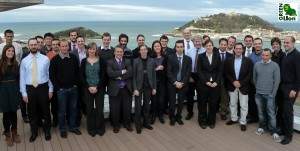 Society‟s current individual mobility behaviour is creating a plethora of looming problems, such as fossil carbon intensity and the concomitant consequences regarding fossil resource supply or the emissions of pollutants such as nitrogen and sulphur oxides (NOx, SO2) and particulate matter. While pollutant problems can be addressed by catalytic converters and filters, expectations run high that the greenhouse gas and resource problems can be addressed by substituting internal combustion engine (ICE) cars with battery powered electric cars (BEV). Most of the major car manufacturers have announced BEVs as part of their product lines in the immediate future.
Society‟s current individual mobility behaviour is creating a plethora of looming problems, such as fossil carbon intensity and the concomitant consequences regarding fossil resource supply or the emissions of pollutants such as nitrogen and sulphur oxides (NOx, SO2) and particulate matter. While pollutant problems can be addressed by catalytic converters and filters, expectations run high that the greenhouse gas and resource problems can be addressed by substituting internal combustion engine (ICE) cars with battery powered electric cars (BEV). Most of the major car manufacturers have announced BEVs as part of their product lines in the immediate future.
Lithium ion batteries are indicated as the option for the next generation of hybrid and electric vehicles (HEV, EV). The wide deployment of lithium ion batteries in the automotive industry would have tremendous consequences on the battery-market and it would further strengthen the central role of these systems in the field of energy storage. For that, considerable efforts are now focused on the development and realization of lithium ion batteries able to fulfill the requirement necessary for the application in HEV and EV. When the present lithium ion technology is considered, the safety and cost of batteries appear as the main drawbacks holding the introduction of this technology.
In order to tackle these issues from the manufacturing perspective before the final battery pack integration, the GREENLION proposal has identified three key levels in the value chain, namely battery components, especially electrode processing, individual cells and battery modules, oriented to the battery pack for EVs.
In the GREENLION proposal, we address the above issues by the industrial development of eco-designed processes at the electrode, cell and battery module level. At the electrode processing stage (that will be otherwise independent of the active materials chemistry), developing and making use of:
1. aqueous slurries rather than toxic organic volatile compounds (25% cost reduction);
2. non-thermoplastic polymers that allow for high temperature drying, which results in shorter and less expensive assembly procedure (10% efficiency); and
3. easily disposable non-fluorinated polymers (at expected 10 times less materials cost).
At the cell assembly level, further improvements to the existing procedures as well as changes at some steps of the assembly process will be developed to increase energy efficiency and shorten times (and hence lower costs) during the manufacturing process, by implementing:
1. laser cutting instead of mechanical notching of the electrodes (15% cost),
2. adjusted stack winding of components from aqueous-based electrodes and their drying process before electrolyte filling and sealing, to lower dry room requirements,
3. environmentally friendly bonding process for more effective and long-life cell sealing, and
4. Adjusted formation step time (ideally for electrodes with reduced formation cycle) in cell manufacturing line (5% time reduction).
Finally, developing a modular battery allows an easier handling of cells within a complete battery pack. At this battery module level, GREENLION project will design an autonomous unit including its own electrical and thermal management as a simple and reliable building block that will allow the manufacturing and maintenance of the whole battery packs easier and more inexpensively, with the lowest possible environmental impact. This will be achieved by:
1. Lighter battery module designs (including electronics) by implementing air cooled solutions instead of liquid cooling systems (expected 20% less weight),
2. bonding process of module housing for safe operation but easy disassembling for maintenance and reuse/recycling at their end-of-life, and
3. automation of module assembly process (3 cell/s vs. manual assembly).
The scientific and technological cooperation in GREENLION consortium and their roles in the project are well balanced covering the complete chain from raw material, scientific comprehension, technological research and end users. As an essential part of the project, the industrial partners will commit to exploit all commercial aspects of the new manufacturing processes. To this purpose, the industrial partnership was designed to combine Li-ion cells and module manufacturers (CEGASA), processing equipment manufacturers (POLYTYPE & KEMET), material suppliers (SOLVAY and TIMCAL), automation of assembly processes providers (MONDRAGON ASSEMBLY), recycling and waste treatment services suppliers (TECNICAS REUNIDAS), and car manufacturers (SEAT and VOLKSWAGEN). The research institutions (RESCOLL) and universities in GREENLION consortium provide complementary skills and expertise in the relevant fields of research and development that are necessary to achieve the project objectives.
